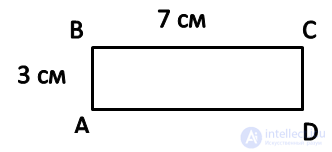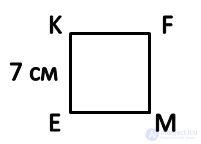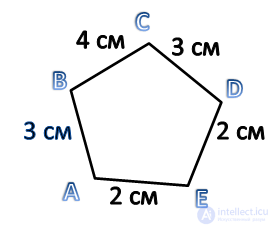Lecture
The perimeter is the sum of the lengths of all sides of the polygon.
Sometimes, special formulas are used to calculate the perimeter of geometric figures, in which the perimeter is denoted by the capital Latin letter P.
The perimeter is measured in units of length: mm, cm, m, km, etc.
When finding the perimeter, we recommend writing the name of the figure in small letters under the sign P, so as not to forget whose perimeter you find.
The perimeter of the rectangle is the sum of the length and width multiplied by 2.
P = (a + b) • 2, where a is the length of the rectangle, b is the width of the rectangle.
The sides of the rectangle that are opposite each other (opposite), we call the length and width.
 AB = 3 cm, BC = 7 cm
AB = 3 cm, BC = 7 cm The perimeter of the square is the length of the side of the square multiplied by 4.
P = a • 4, where a is the length of the side of the square.
 KE = 7 cm
KE = 7 cm The perimeter of any polygon (including the perimeter of a triangle ) is calculated by the definition of the perimeter. To do this, simply add the lengths of all sides of the polygon.

Comments
To leave a comment
Planometry
Terms: Planometry